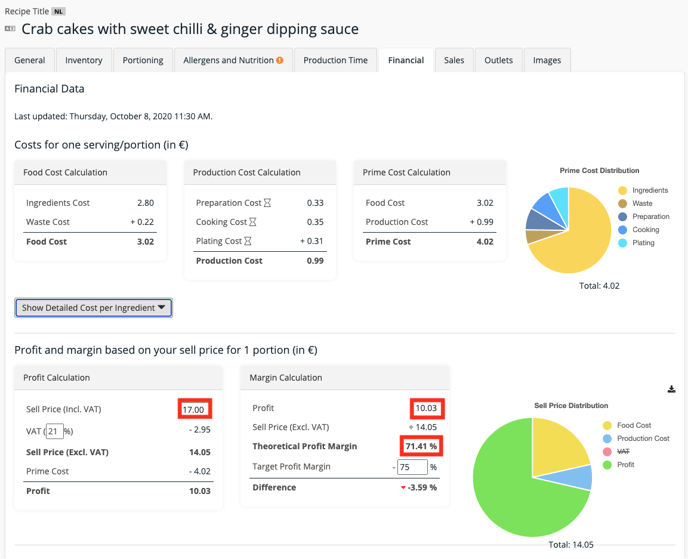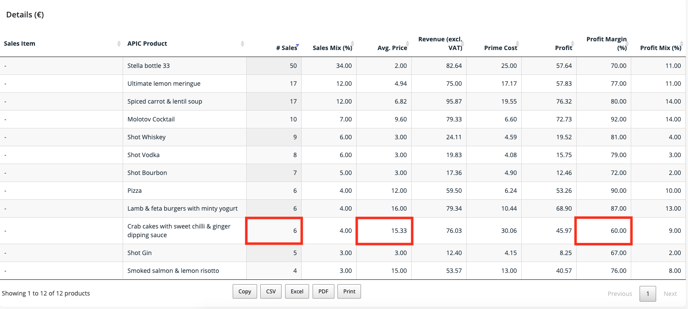A question every manager wants to know! Am I making enough money? We show you in this article how Apicbase can help you to answer this question.
You can check the profit margin of your dishes in two ways.
- You can check the theoretical profit margin in the recipe details.
- You can check the real profit margin in the sales analytics module.
1. Theoretical profit margin
If you want to calculate the theoretical profit margin of a recipe, you first have to add the recipe to Apicbase. If you have not done this, check the following article on adding a recipe.
Once you have added the recipe and the financial information, you can check the theoretical food cost and profit margin. Read this article to learn how this works.
- For example: We recently raised the price of our Crab cakes because the price of white crab meat had raised. We used the profit and margin calculator in the "Financial" tab of the recipe, and came to a price of 17€. This gives us a theoretical profit margin of 71.41%, which is already lower than the target margin of 75%. Because the dish was priced at 15€, we did not want to raise the price more than 2€.

When we go to the detailed cost per ingredient, we see that the crab meat makes up half of our foodcost.
2. Real profit margin
Calculating a theoretical profit margin is nice, but if the theory does not match reality, it's of no use to you. To check the real profit margin of a recipe, go to the sales analytics module. To read more about the sales analytics module, check this article.
- Back to the example: The theoretical profit margin seem ok for this type of dish. We are, however, using the theoretical price to calculate the profit. Now we want to check, what our real profit margin is. For this we go to the "Sales Analytics" module by first selecting "Analytics" and select the data for a period that is representative for our average sales. A month for example.
When we go to the sales analytics details, we see that the real profit margin is lower. The sales analytics uses the average price payed per item. This means if you have items that are sometimes sold at a lower price or are given for free te customers, the average price will be lower than the price you set in the recipe to calculate the theoretical profit margin. In the case of our Crab cakes, they are sold for 12€ on Fridays. This makes in reality for a lower average price of 15.53€ and a real profit margin of 60%.
This is a lot lower than our target of 75% and gives us reason to evaluate if the dish should stay on our menu.
Tip: There are other reasons to keep an item on the menu, even at lower profit, for example because it is a good item for marketing. You are famous for this item and customers come especially for this. If there is no reason to keep the item, it would be wise to see if anything can be done about lowering the foodcost. You could change the crab to salmon for example, or replace the dish with entirely new one that has a better profit margin.
